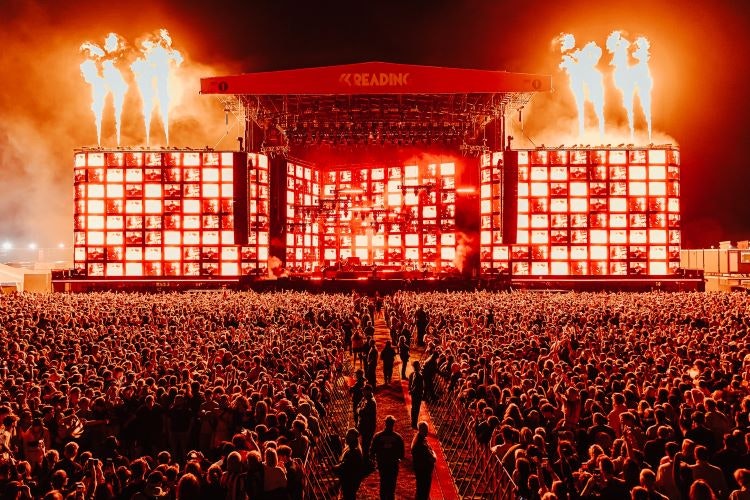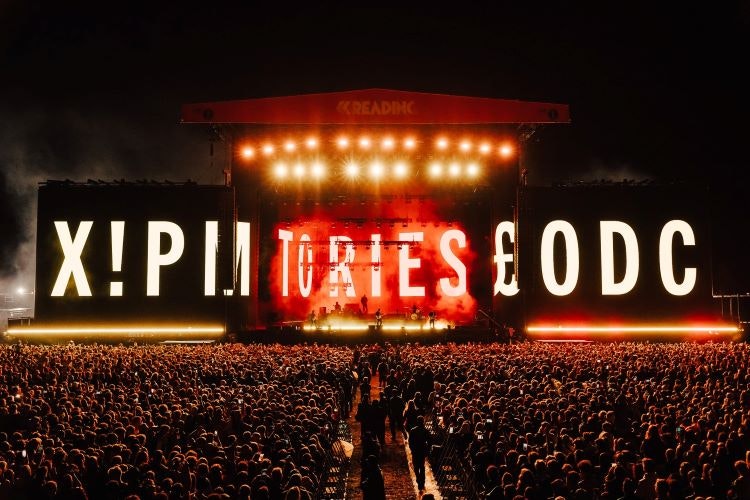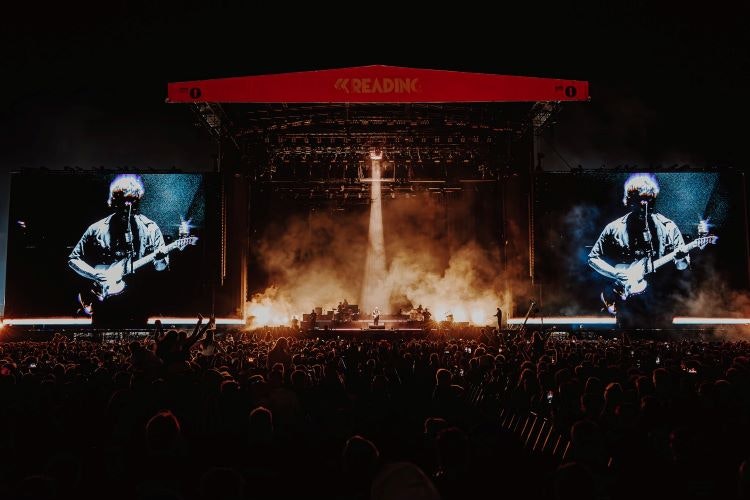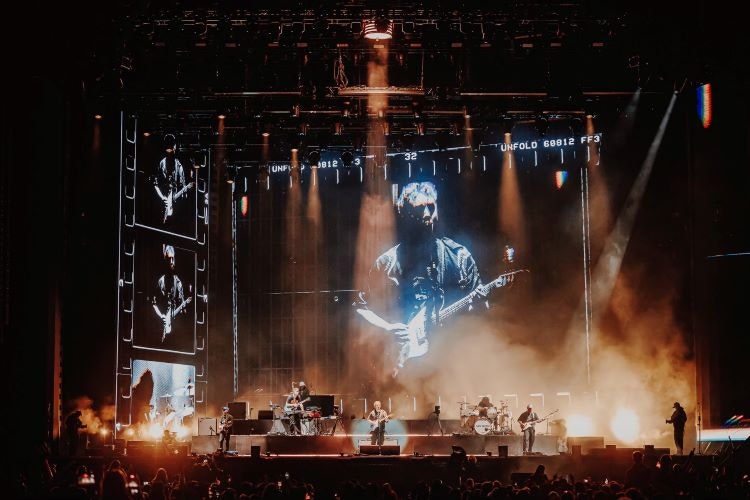Production and performance designer Sam Tozer has revealed the design behind Sam Fender’s upcoming headline festival show, featuring an asymmetrical stage design and metal textures synonymous with the theatre world.
Since they first began working together in 2021 across shows of all sizes, from Brixton Academy gigs to stadiums and headline festival shows, Tozer says he and Fender have “grown together” professionally. The Reading/Leeds Festival headline show is “similar to the Newcastle stadium shows” that took place earlier this year, says Tozer, as they were Fender’s “biggest shows to date and the most relatable to him”.

One challenge of show design is “the bigger you get, the further the audience is away from a six-foot performer on a stage”, according to Tozer. Part of his role is to ensure “it’s as striking on the back row as it is on the front”, he says.
Fender’s upcoming headline show has “a generic visual stimulus” running through it, of an asymmetrical “scenic piece” made from a “hard-looking, stark metal”, says Tozer. Early on, Tozer carried out some research with set designer Flora Harvey on metals and “environments that Sam relates to in North Shields”, his hometown near Newcastle upon Tyne.

Tozer says that other artists “in the same remit”, use “so much symmetry”, which didn’t seem right for Sam Fender’s “dark and moody” artistry. To find “a look that no one else has”, Tozer explains how he and Harvey sketched out a random shape, before moulding it to create an “industrial”, unrefined set that showcases raw textures more common “in the theatre world”.
The 50 to 100-metre-wide video screens are framed with the same metal and display content carefully chosen for each song. Some of the imagery in the “content-driven show” contains “Easter eggs and hidden elements” that convey “quite abrupt political messages”, but can only be seen if “you’re really looking for them”, says Tozer.

More theatrical techniques come into play through the lighting which involves a large rig of automated lights above that move in and out, changing the shape of the stage change according to the song. For example, in “heavier numbers”, Tozer explains how the lights come all the way down “making the stage feel more intimate” while, in “big numbers”, like Howden Aldi Death Queue and Spice, the lighting team makes use of “all the pyrotechnics” in a bid to “open the space up” and make it feel “super grand”.
He describes working with an artist in the alternative/indie genre as “refreshing” as Fender “doesn’t need all the bell and whistles behind him”. This involves “creating wow factor without taking away from the musical performance”, he says, explaining how he looks to “refine what you see visually” to match the music.

While Fender’s lyrics are “quite dark”, Tozer defines his “tones and sounds” as “upbeat” and suited to a festival setting. “Finding that same happy medium” through the show design is equally important, according to Tozer.
Often, Fender doesn’t decide what he’s going to perform until a few hours before he goes on stage, although Tozer says he recognises a rough structure to his shows after working with him for a number of years.

Given the relatively unpredictable nature of the show, “every song has a got a look, feel and a whole element of production that goes with it” that is pre-choreographed and pre-programmed, says Tozer. This means that all the team has to do is organise these pre-made elements into the order of the setlist, rather than designing the whole show as one programme.
Tozer’s remit for the project was creative direction and production design and he worked with a a team of experts: Flora Harvey on the set design, Unlimited Dream Company on the content creation and design and Luke Avery as lighting director.
Other credits include Owain Davies, Sarah Mitchell, Semera Khan from OD management, tour manager Oli James and production manager Rob Simpson.

- Design disciplines in this article
- Industries in this article
- Brands in this article










